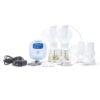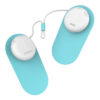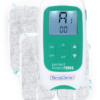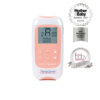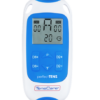Pain with breastfeeding – What can you do?

Pain with breastfeeding – What can you do?
Your comfort during breastfeeding depends, in large part, on where your nipple lands in your baby’s mouth. And that depends on how your baby takes the breast, or latches on. When your baby attaches to the breast deeply, she’s able to get milk effectively, and you are able to nurse comfortably.
To understand the difference between a deep latch and a shallow latch, use your tongue or finger to feel the roof of your mouth.
Behind your teeth and the ridges, the roof feels hard. When your nipple is pressed against this hard area in your baby’s mouth, it can hurt.
Farther in your mouth, you’ll feel where the roof turns from hard to soft. Some have nicknamed this area “the comfort zone.” Once your nipple reaches your baby’s comfort zone, breastfeeding feels good. There is no undue friction or pressure on your nipple.
To make breastfeeding easier, support your baby’s inborn feeding skills by bringing her entire body in contact with yours.
In laid-back positions, gravity helps the nipple reach the comfort zone. In other positions, you need to work harder to help your baby take the breast deeply. As your baby latches:
- With your baby’s body pressed firmly against you and her nose in line with your nipple, let her head tilt back a bit (avoid pushing on the back of her head).
- Allow her chin to touch the breast then move away.
- Repeat until her mouth opens really wide, like a yawn.
- As she moves onto the breast chin first, gently press your baby’s shoulders from behind for a deeper latch.
That last gentle shove helps the nipple reach the comfort zone. Breastfeeding tends to feel better when your baby latches on off-center, so her lower jaw lands far from the nipple.
Signs of Deep Breastfeeding
- You feel a tugging but no pain. (In the first week or so, you may feel some pain at first but this should ease quickly.)
- You may hear your baby swallowing.
- Both of her lips are rolled out.
- You see more of the dark area around the nipple above your baby’s upper lip than below, which means the latch is off-center as it should be.
- Your baby breastfeeds with a wide-open mouth, not a narrow mouth.
- When baby comes off, the nipple is rounded, not pointy looking.
Breastfeed until your baby is done. When she comes off the breast, burp her or change her diaper. Then, offer the other breast. Babies take one breast at some feedings and both breasts at other feedings.
If breastfeeding hurts, seek help right away from a board-certified lactation consultant (IBCLC). See “Resources.” Nipple pain can almost always be alleviated by adjusting the way the baby takes the breast. The sooner you see someone who can help, the better. Some will also recommend an HPA Lanolin cream to help speed the healing process if you have cracked or bleeding nipples. This is safe for breastfeeding and not harmful to the baby.
Shaping the Breast
If your baby has trouble taking the breast, shaping the breast may help. To do this:
- Be sure your thumb and fingers run in the same direction as her lips. (Imagine your thumb as your baby’s moustache.)
- Keep your fingers back, out of her way.
- By squeezing the breast a little, this “nipple sandwich” may be easier for her to grasp.
Where you put your hand to shape the breast varies by the direction the baby approaches the breast. If she is lying across the breasts, shape your thumb and fingers like a “U.” If she you hold your baby along your side, shape your thumb and fingers more like a “C.” Remember, your fingers should run in the same direction as your baby’s mouth.
Breastfeeding is less work if your baby goes to the breast at breast level. Some babies do better early on if you support your breast. Others don’t need support. Do what works best.
Nancy Mohrbacher, IBCLC, FILCA, Lactation Consultant, Ameda Breastfeeding Products
Coauthor of Breastfeeding Made Simple: Seven Natural Laws for Nursing Mothers

